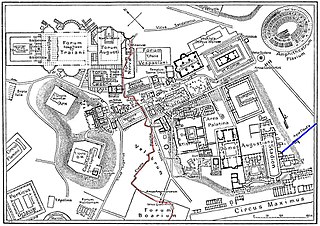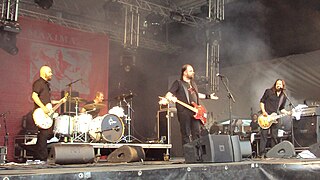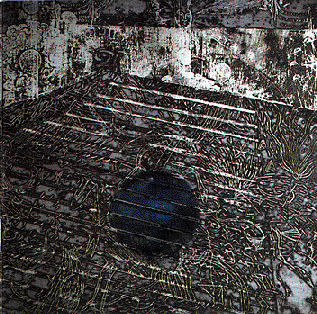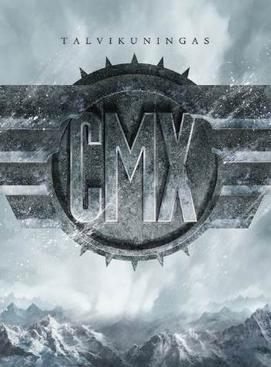
The Cloaca Maxima was one of the world's earliest sewage systems. Its name is related to that of Cloacina, a Roman goddess. Built during either the Roman Kingdom or early Roman Republic, it was constructed in Ancient Rome in order to drain local marshes and remove waste from the city. It carried effluent to the River Tiber, which ran beside the city. The sewer started at the Forum Augustum and ended at the Ponte Rotto and Ponte Palatino. It began as an open air canal, but it developed into a much larger sewer over the course of time. Agrippa renovated and reconstructed much of the sewer. This would not be the only development in the sewers. By the first century CE all eleven Roman aqueducts were connected to the sewer. After the Roman Empire fell the sewer still was used. By the 19th century, it became a tourist attraction. Some parts of the sewer are still used today. Whilst still being used, it was highly valued as a sacred symbol of Roman culture, and Roman engineering.

CMX, originally Cloaca Maxima, is a Finnish rock band. They originally played hardcore punk, but soon expanded to play a wide variety of rock formats, including progressive rock, heavy metal, and mainstream rock 'n' roll. Throughout their career, they have been influenced by progressive rock bands such as Rush, Yes, Tool and King Crimson. The progressive influence is most evident on their albums Dinosaurus Stereophonicus (2000) and Talvikuningas (2007).

Ismo Kullervo Alanko is a Finnish musician. He is known as the frontman of several bands, most famously Hassisen Kone, Sielun Veljet and Ismo Alanko Säätiö, as well as a successful solo artist.

Dinosaurus Stereophonicus is the eighth album by the Finnish rock group CMX, released in 2000. It was recorded after the band had decided to stop touring and become a full-time studio band. The decision only lasted until 2002.

Aion (2003) is an album by the Finnish rock group CMX. The word Aion is Ancient Greek for "age, life-force" and also a Finnish verb form meaning "I intend ".

Aurinko (1992) is an album by the Finnish rock group CMX. The word "Aurinko" means "The Sun" in Finnish. The album cover depicts a cross section of a pineapple.

Aura (1994) is an album by the Finnish rock group CMX. The album gained the band its first near-hit single and some commercial airplay with "Ruoste". Although many people consider Aura to be the band's seminal record, at this point many older fans were already scoffing at the more streamlined, acoustic songs and mellow soundscapes as compared to their earlier hardcore steamrolling. However, Aura pretty much defines the band's sound up to this day, with a mixture of heavy and light elements and songwriting reminiscent of 1960s and 1970s progressive rock.

Rautakantele is a 1995 album by the Finnish rock group CMX. "Rautakantele" is Finnish and means "The Iron Kantele".

Cloaca Maxima II (2004) is the second compilation album by the Finnish rock group CMX, released seven years after their first compilation Cloaca Maxima. The name Cloaca Maxima means "Great Sewer" in Latin, and was also the name of the band before it was shortened to CMX. The compilation consists of three CDs named Lyijy, Helium and Uraani respectively. The names of the CDs are all names of chemical elements in Finnish: Lead, Helium and Uranium. The compilation is divided between CDs in a similar way to the earlier Cloaca Maxima. Lyijy contains rock songs that CMX would usually play on stage, while Helium focuses on softer material. Uraani is reserved for B-sides of singles and some other CMX rarities. Three new songs were recorded exclusively for the compilation.

Vainajala (1998) is an album by the Finnish rock group CMX. Vainaja is Finnish for a dead person, Vainajala meaning a name of a place inhabited by the dead.

Pedot is the eleventh album of the Finnish rock band CMX. "Pedot" means "Beasts" in Finnish.

Discopolis is the sixth studio album by the Finnish rock group CMX.

Isohaara is the ninth studio album by the Finnish rock group CMX. The album is named after Isohaara power plant in Keminmaa. The band spent six months in the studio because of the chosen songwriting method: the songs were written and rehearsed at the studio under constant perfecting and re-arranging. Musically the album is lighter and more accessible than its predecessor, the over 100-minute Prog-epoch Dinosaurus Stereophonicus.

Veljeskunta (1991) is an album by Finnish rock band CMX. Its name means "The Brotherhood" in Finnish.

Talvikuningas (2007) is an album by the Finnish rock group CMX. The title is Finnish and translates to "The Winter King".
"Kultanaamio" is the second single from the Finnish rock band CMX's 1994 album Aura. It also appears on the group's first compilation album Cloaca Maxima. "Kultanaamio" means "Golden Mask" in Finnish.

"Pelasta maailma" is the first single from the CMX album Rautakantele. It also appears on the compilation album Cloaca Maxima. The chorus contains a quote from a poem by L. Onerva. "Pelasta maailma" means "Save the World" in Finnish.

Tanssitauti is an EP by CMX released in 1990. The band had released their debut album Kolmikärki earlier the same year with a different lineup. Tanssitauti is the first CMX recording to feature guitarist Janne Halmkrona, who appears on all of the band's albums from this point on.

Musiikin ystävälliset kasvot is an EP by CMX. It was recorded in 1991 to be released as a four song EP, but instead the title track was released as a single. The EP was finally released in 1998 under the name Musiikin ystävälliset kasvot + 5 and included six songs. The originally planned four song EP was released in 2002 as a part of Veljeskunta Gold.

Kaikki hedelmät is the third compilation album by the Finnish rock group CMX. It was published on November 5, 2008. Unlike previous two triple compilation albums it concentrates on hits and singles. It includes two new songs that are to be released also separately.



















